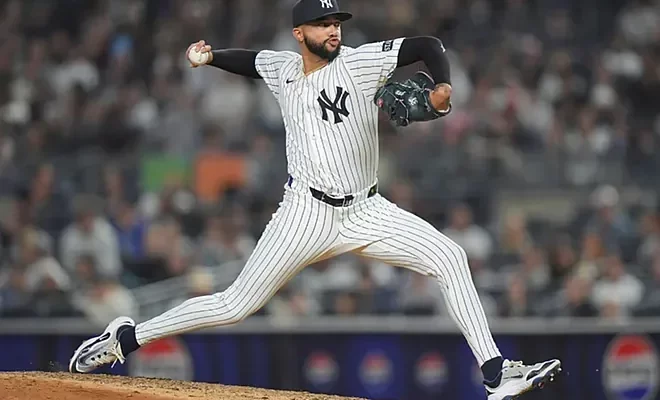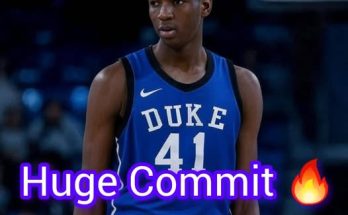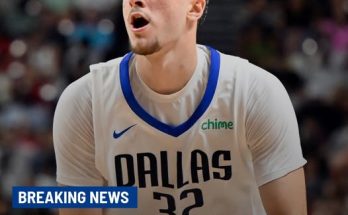The Los Angeles Dodgers are once again showing their willingness to make strategic, low-risk moves in an effort to strengthen their roster, this time turning their attention to the bullpen. With the 2025 season looming, the Dodgers have set their sights on Devin Williams, a hard-throwing right-hander who most recently found himself in the Yankees organization but struggled to find consistent success. Known for his electric fastball and devastating curveball, Williams represents a potential bargain for a Dodgers bullpen that has had its fair share of highs and lows in recent seasons. This move, described by insiders as a one-year “rebound” opportunity, signals the Dodgers’ intent to acquire talent with upside, even if it comes with some uncertainty.
Devin Williams is not a household name in the way that some of baseball’s elite relievers are, but his career trajectory has offered flashes of brilliance. The 28-year-old right-hander made waves earlier in his career with his ability to dominate hitters with a combination of velocity and movement that few can match. His time with the Brewers showcased his potential, particularly during peak stretches where his strikeout rate was among the highest in the league. Yet inconsistency and injuries have clouded his career path, leading him to a stint with the Yankees in an effort to revive his performance. The Dodgers’ interest signals a belief that Williams still has untapped potential that can be harnessed in the right environment.
For the Dodgers, bolstering the bullpen is an ongoing priority. While the team has had strong starting pitching depth, the relief corps has occasionally been a point of vulnerability, especially in high-leverage situations late in games. Acquiring a pitcher like Williams, who possesses a track record of dominance even if inconsistent, is a calculated gamble. The Dodgers’ front office has long demonstrated an ability to identify pitchers who can thrive in their system, and they appear confident that Williams’ best baseball is still ahead of him.
The concept of a “rebound” year is critical to understanding this move. The Dodgers are essentially banking on Williams rediscovering his elite form over the course of a single season. One-year contracts of this nature allow teams to take calculated risks without a long-term commitment, giving the player an opportunity to prove himself while giving the organization flexibility. If Williams can return to even a fraction of his peak performance, the Dodgers stand to gain a high-reward arm without the long-term financial implications of a larger contract. This aligns perfectly with the Dodgers’ approach in recent seasons, where targeted acquisitions are often guided by upside potential rather than guaranteed production.
Williams’ pitching arsenal has always been intriguing to analysts. His fastball sits in the mid-to-upper 90s, complemented by a curveball that has been described as “wipeout” material when located properly. Historically, when his command is on, Williams can be nearly untouchable, striking out hitters at an impressive clip. However, consistency has been the challenge. In recent seasons, command issues and periods of ineffectiveness have hampered his ability to maintain a stable role in major league bullpens. The Dodgers’ coaching staff, renowned for their work with pitchers, may be the ideal environment to help Williams refine his approach, regain confidence, and maximize the movement on his pitches.
The Dodgers’ bullpen has had standout contributors in the past, but the grind of a long season often exposes gaps that need attention. By targeting a player like Williams, the Dodgers are not just filling innings—they are searching for impact. High-leverage situations demand pitchers who can generate swings and misses, and Williams’ skill set lends itself to those moments when he is at his best. The addition also provides depth and insurance for the Dodgers’ relief corps, ensuring that the team can navigate injuries or slumps without sacrificing late-inning effectiveness.
From a financial standpoint, the move makes sense as well. One-year deals with upside arms like Williams are cost-effective, freeing resources for other areas of need while also mitigating risk. The Dodgers have a history of leveraging their budget efficiently, often opting for short-term contracts to acquire players who can contribute immediately. If Williams can rebound as hoped, the team could enjoy a significant return on investment without the long-term commitment that typically accompanies elite bullpen arms.
Williams’ journey from the Brewers to the Yankees and now potentially to the Dodgers is a story of resilience. Many players experience peaks and valleys in their careers, and the ability to adapt and continue pushing forward is a hallmark of long-term success. For Williams, the opportunity to join a high-profile, championship-caliber team like the Dodgers represents not only a chance to resurrect his career but also to contribute in meaningful ways on the biggest stage. The Dodgers’ reputation for supporting player development may be just the environment he needs to regain his footing and make a lasting impact.
The Dodgers’ decision also reflects a broader trend in Major League Baseball, where teams are increasingly willing to take calculated risks on players with prior success who may have underperformed recently. The combination of advanced analytics, coaching expertise, and a supportive team culture can turn perceived risks into high-reward outcomes. Williams fits that mold perfectly, offering the tantalizing possibility of a pitcher who could dominate when his stuff is working, without the downside of a large, multi-year financial commitment.
Critics may point to Williams’ inconsistency as a concern, but the Dodgers are betting on their ability to unlock his potential. The team has a history of revitalizing careers, particularly with pitchers who have shown flashes of brilliance but struggled with consistency. The combination of coaching, analytics, and a culture that emphasizes preparation and adaptability could provide Williams with the tools he needs to achieve sustained success. The one-year nature of the deal also keeps expectations realistic: if the rebound does not materialize, the team can reassess without a long-term burden.
For Dodgers fans, the acquisition represents an intriguing development. While marquee signings often dominate headlines, the value of strategic bullpen additions cannot be overstated. Games are frequently decided in the late innings, and having reliable arms ready to perform under pressure is critical to sustained success. Devin Williams, with his electric arm and potential for dominance, offers hope that the Dodgers’ bullpen can reach new heights in 2025. His success could be a key factor in the team’s pursuit of another postseason run, where every matchup is magnified and every strikeout counts.
Beyond the individual implications, the move also underscores the Dodgers’ commitment to maintaining a competitive edge. In an era where roster flexibility and depth are paramount, the team’s ability to identify and acquire players who can contribute meaningfully, even in short stints, is a major advantage. The combination of strategic foresight and willingness to embrace calculated risk is a hallmark of the Dodgers’ organizational philosophy, and the pursuit of Williams is a perfect example of that approach in action.
As the 2025 season approaches, all eyes will be on how Devin Williams adapts to his new environment. Will he rediscover the form that once made him one of the most exciting relievers in baseball? Can the Dodgers’ coaching staff and analytical support help him maximize his strengths and minimize his weaknesses? While there are no guarantees, the potential upside is clear, and the Dodgers are betting that their system is the right place for a one-year resurgence.
Ultimately, the pursuit of Devin Williams reflects the Dodgers’ larger strategy of combining proven talent with high-upside acquisitions to maintain competitiveness. The team’s willingness to take calculated risks, especially in the bullpen, is indicative of a front office that understands the importance of depth, flexibility, and opportunity. If Williams can indeed achieve a rebound season, it will not only validate the Dodgers’ approach but also provide a significant boost to a team with championship aspirations.
In the high-stakes world of Major League Baseball, success often hinges on finding value where others see risk. Devin Williams represents exactly that kind of opportunity for the Dodgers: a pitcher with undeniable talent, past success, and a chance to return to form in a supportive, data-driven environment. While the path may be uncertain, the potential reward—a revitalized bullpen arm capable of dominating in critical moments—makes the gamble worthwhile. As spring training unfolds and the regular season draws near, all attention will be on whether Williams can seize this one-year chance to reignite his career and help the Dodgers chase another championship.
In conclusion, the Dodgers’ eyeing of Devin Williams is emblematic of a modern approach to roster construction: calculated, strategic, and grounded in analytics, coaching expertise, and player development. The one-year “rebound” deal offers minimal risk but significant upside, aligning perfectly with the team’s philosophy of maximizing potential while maintaining flexibility. For Williams, it is a critical opportunity to prove himself, reclaim his status as a dominant reliever, and contribute to a team poised for contention. The coming months will reveal whether this gamble pays off, but for now, the Dodgers’ move signals optimism, strategic foresight, and a continued commitment to building a bullpen that can perform when it matters most.



